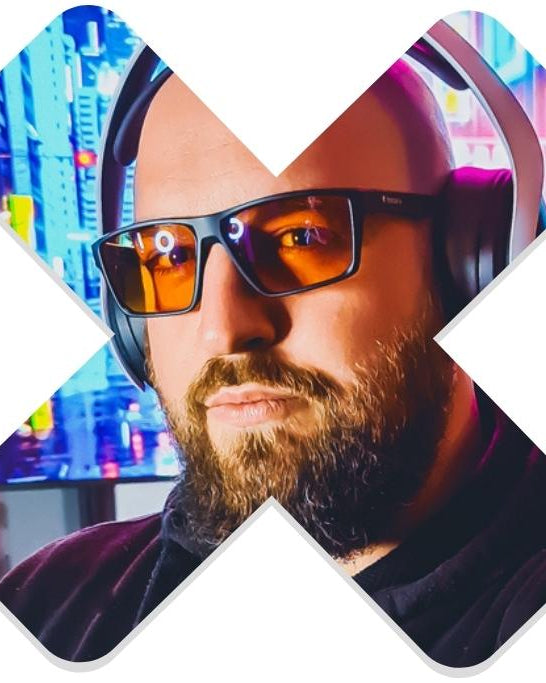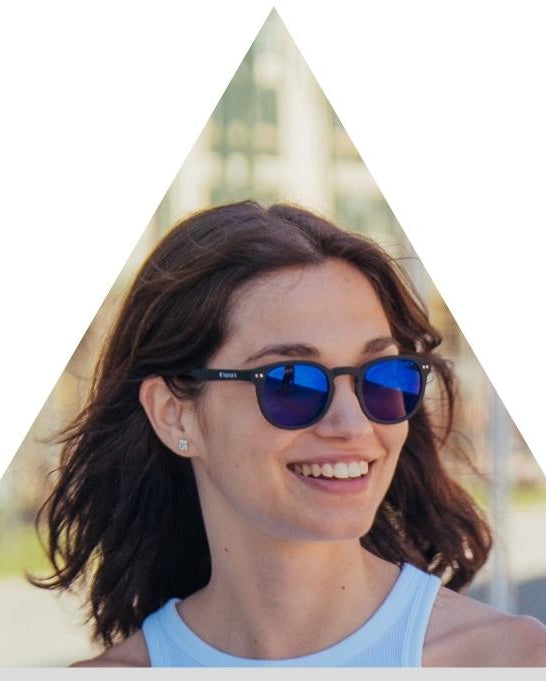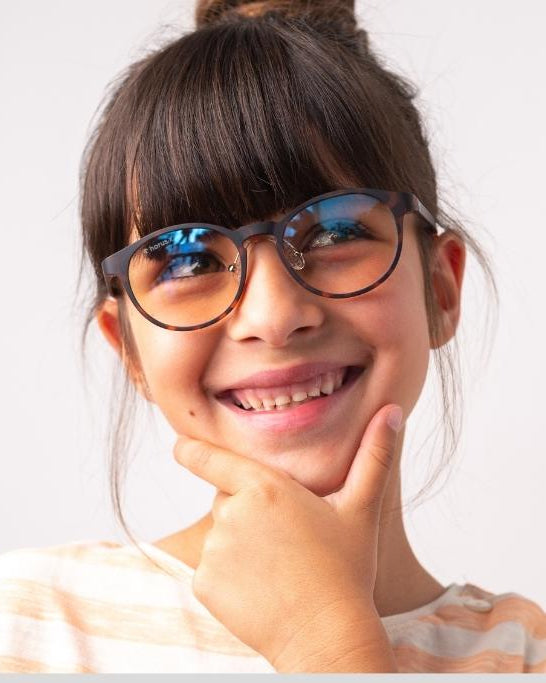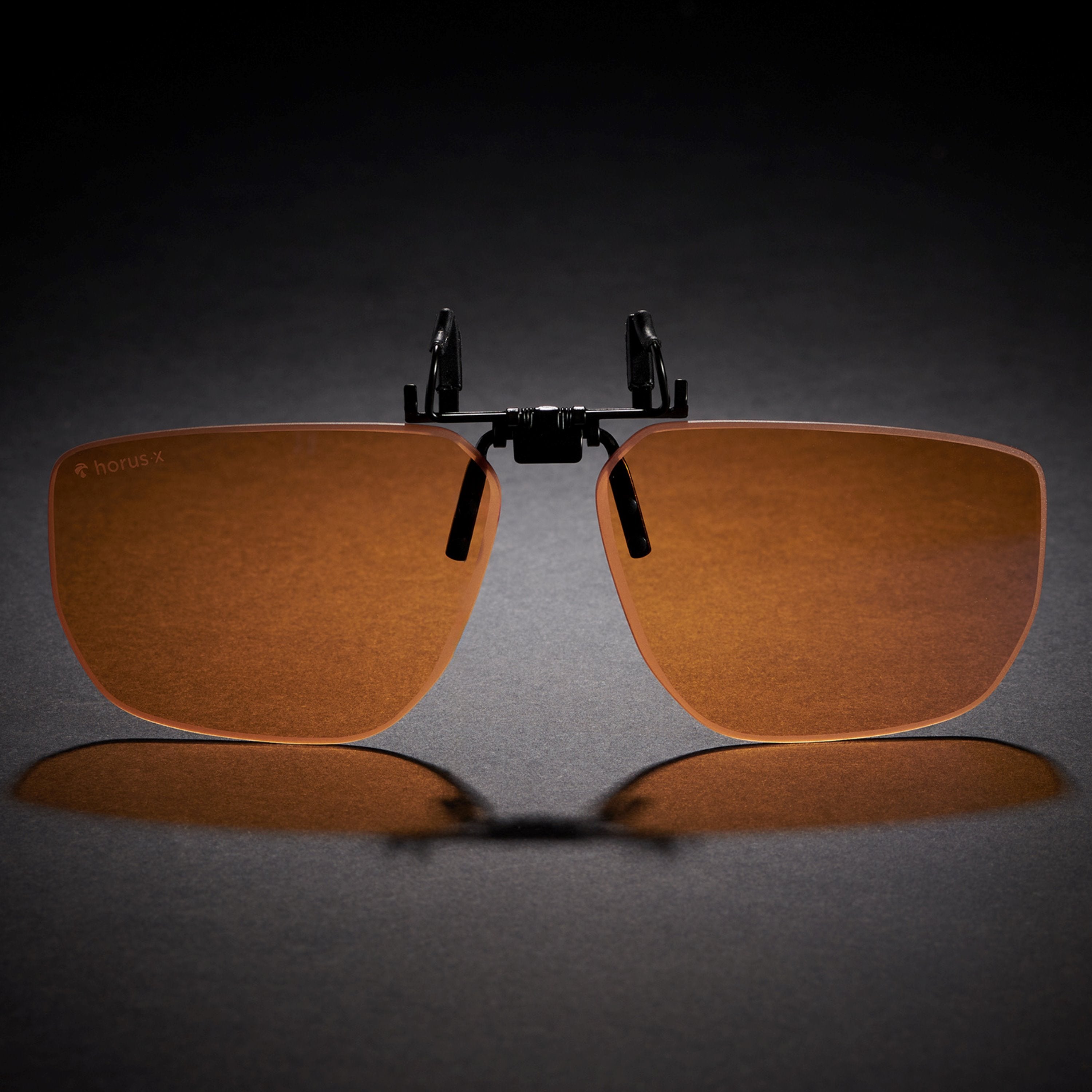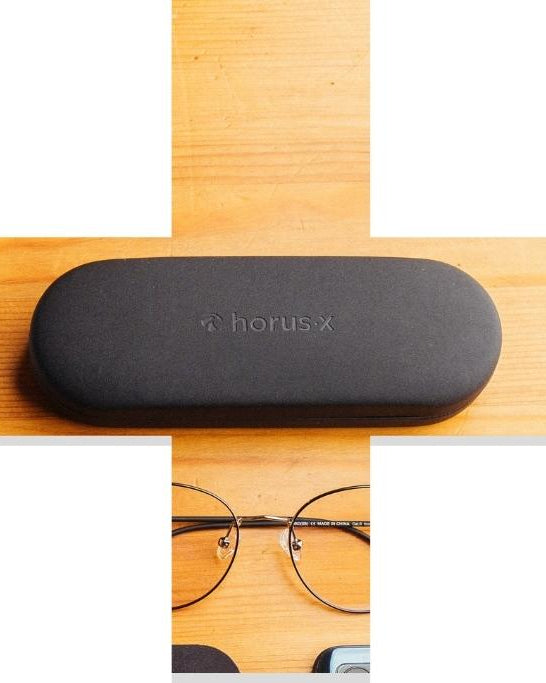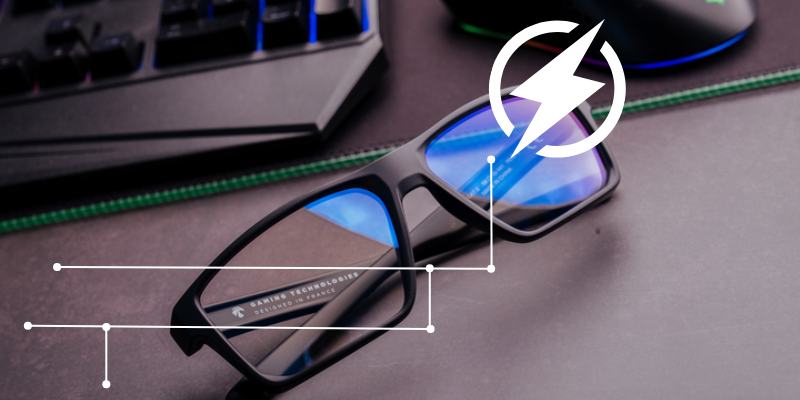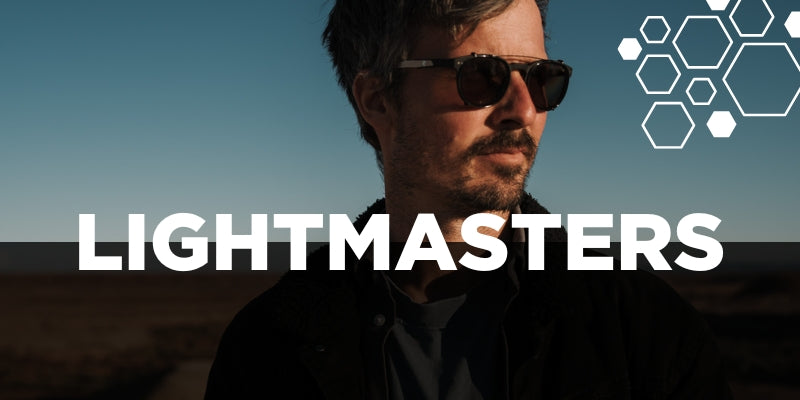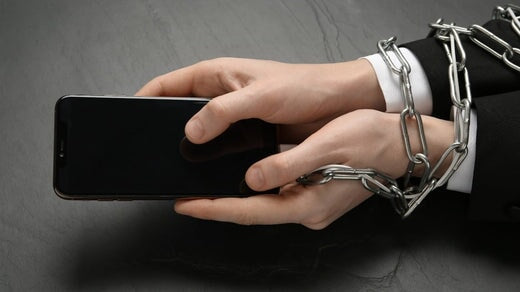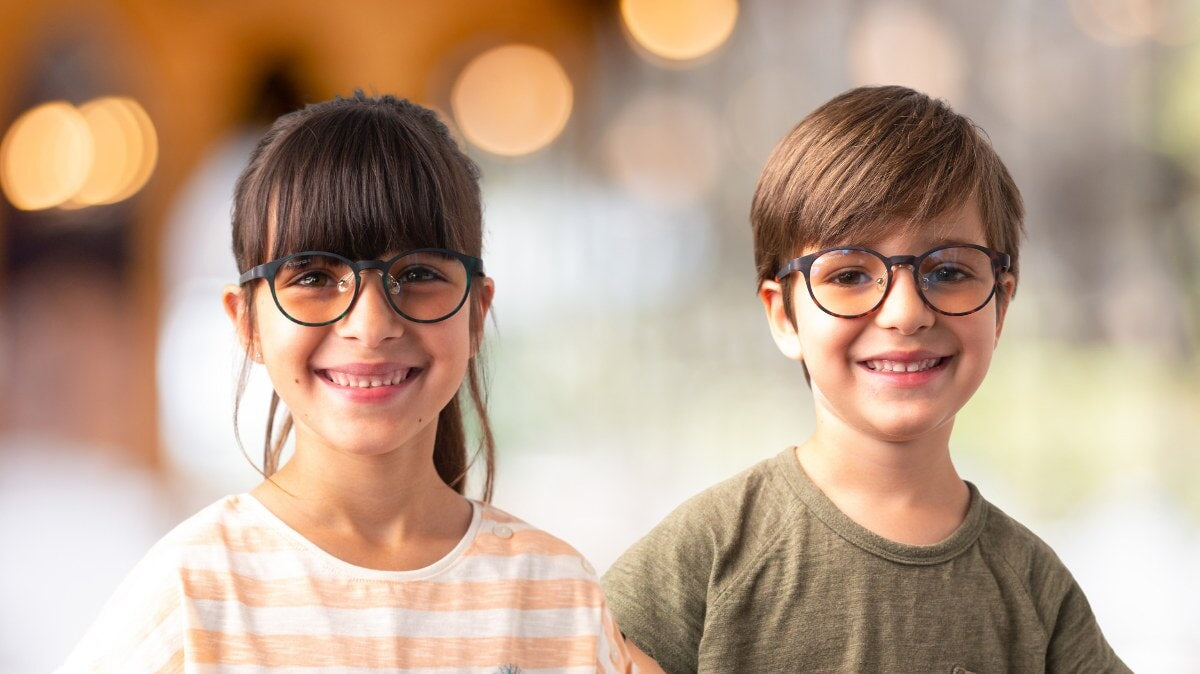Dealing with a child begging to watch Paw Patrol for the 500th time is no fun for any parent. Especially when you’re concerned about the impact it will have on their still-developing eyes.
Just like adults, children are exposed to blue light and digital screens very regularly, from a very young age. The problem is that studies have shown this can have unwanted effects and potentially cause long-term harm.
We don’t know the full impact of overexposure to blue light, but it’s better safe than sorry. Which is why we recommend preventative treatment, like blue light glasses for kids.
What is blue light?

Blue light is a part of the visible light spectrum, with wavelengths between 380 and 500 nanometers.
Even though it's everywhere, let's get one thing clear straight away: not all blue light is bad.
There are two types:
- ☀️Natural blue light: Emitted by the sun and necessary for the proper functioning of the body to regulate our biological rhythms and the production of melatonin.
- 🔵 Artificial blue light: Which in the evening disrupts the circadian rhythm and, at 380 to 450 nanometers, can have other negative effects on your eyes.
Several light sources emit this type of light:
- 📱 Screens (smartphones, computers, tablets, televisions, etc.)
- 💡 Modern LED lighting
The dangers of blue light can be quite varied, but that doesn’t mean there’s cause for alarm.
The dangers of blue light from screens

Thanks to our need for technology, artificial blue light is a constant part of our daily lives, impacting our health and causing eye damage.
The short-term effects of prolonged exposure to blue light include:
- 👀 Digital Eye Strain (also known as Computer Vision Syndrome) and all its associated symptoms (eye irritation, redness, itching, dry eyes, headaches, etc.).
- 😴 Sleep disorders: Insomnia and difficulty falling asleep can be caused by blue light exposure late at night. Which can in turn lead to other problems, stress and anxiety, cognitive and mood disorders, weight gain, diabetes, etc.
- 🥱 General fatigue
The long-term impact of blue light is not fully understood, but there has been links to issues such as:
- 👁️ Vision problems: Reduced visual acuity, myopia and an increased risk of AMD (age-related macular degeneration).
Blue light blocking glasses: A real solution
Children and screens: A real problem

Artificial blue light is harmful to everyone, but young people are particularly affected.
The younger you are, the more sensitive you are to the harmful effects of blue light. Until at least age 10, children’s visual systems are still developing, so their lens hasn’t yet learnt how to fully filter light. As a result, blue light penetrates the retina more deeply, potentially causing long-term damage.
The main problem is that in this day and age, children (and adults) are far exceeding recommended daily screen time limits. That means they’re overexposed and often, without any mitigating protection. The consequences of which, can be dire.
It’s especially concerning when you learn that 74% of children under 2 watch television, and studies from 2024 reveal that screen time is highest among the 11-14 year old demographic; who spend up to 9 hours daily looking at screens.
This far exceeds the recommendations by the WHO (World Health Organization), who advise:
- No screen time under 3 years old
- 20 minutes between 3-6 years old
- 1-2 hours for 6–9-year-olds
- Careful supervision for 9+
Blue light blocking glasses for kids: The most effective way to filter blue light

There are several solutions to reduce exposure to blue light. Manufacturers of screens, TVs and telephones are increasingly offering modes to reduce the amount of blue light emitted, or a night mode option, for example.
But the most effective way to filter the amount of blue light exposure, is by investing in blue light blocking glasses for kids. As long as you choose them well. Like Cinderella’s glass slipper, it’s not one size fits all.
When looking at which pair would be best for you, make sure to check the advertised filtration rates as that makes all the difference between a useless piece of plastic, and truly beneficial frames.
Horus X offers the best filtration on the market, guaranteed. But of course, we would say that… that’s why we had an independent laboratory confirm the filtration quality for us.
Our clear lenses filter out 61% of the harmful blue light spectrum. Our amber lenses for gaming glasses take performance even further, with 87% filtration. That makes us market leaders on both fronts. It also makes us more smug than Jack Sparrow when he got the Black Pearl.
But it’s not about the adults today. That’s why we also make kids blue light glasses:
- The Hope: A pair of children’s gaming glasses with transparent or amber lenses to choose from, ideal for video game sessions and top filtration.
- The Osaka and the Helsinki: Two pairs of kids glasses with transparent lenses and equally pretty designs for quality filtration in any situation. These blue light glasses for kids are available in two colors, so everyone’s happy.
Our blue light glasses for kids offer UV protection and are anti-glare, with polycarbonate lenses. An ultra-light and resistant material, for flexibility and comfort. The frame is also built with our cutting-edge Ultem technology which means it can withstand all the drama and destruction little chaos-bringers can cause. Style, filtration and solidity all in one pretty package.
Tips to reduce eye fatigue and its risks

Equipping our dear little ones with suitable eyewear is a good start, but we can go even further to reduce the impact of screens and that pesky blue light:
- 🔅 Use LED bulbs: Warm light between 2700K and 3000K emits less blue light
- ⏱️ Monitor and limit screen time: It’s important to set strict rules on screen use from an early age. As parents, you should not leave your child alone in front of their games console, computer or TV until they’re at least 12 years old. Supervise how long they’re watching screens for, but equally importantly, what they’re watching. Kid are exposed to the world at a much younger age nowadays, and you need to be available to discuss anything they might come across.
- 📏 Try and stay the correct distance away from screens: The American Optometrist Association recommends computer screens should be 20 to 28 inches from the eyes.
- 📵 No screen time before bed: The light emanating from them disrupts the production of melatonin (sleep hormone) which helps you get a good night's sleep. So, to avoid poor sleep quality and damaging your internal clock, turn off all electronic devices at least 1.5 hours before going to bed and resist the urge to check them at night.
- 🧘 Take regular breaks: When using their tablet or smartphone, don't forget to remind your child to take regular breaks to rest their eyes. We recommend the 20-20-20 method which consists of looking every 20 minutes at an object 20 feet away (6 meters) for 20 seconds. Simple and efficient!
- 🎨 Encourage off-screen play: There's more to life than just video games (we think)! Encourage them to try activities that don’t involve screens, whether that’s cooking, board games, sports or any other creative activities that they might enjoy.
- 🧑⚕️ Consult an ophthalmologist at least once a year: Annual visits keep your eyes healthy and allow you to spot any potential issues early on.
Blue light glasses for kids: Final thoughts
Children are exposed to blue light at an increasingly young age, for an increasingly long amount of time. However, this isn’t without its side effects and we should be conscious of the impact blue light exposure has on young developing eyes.
To avoid this, good screen habits should be instilled from a young age to reduce visual stress and lessen the chance of physical or mental issues arising.
Blue light blocking glasses are an effective way to protect children’s eyes. Accompany this with screen time limits, breaks and external non-screen-based activities, and your kid might not even want to beat you in Mario Kart anymore.
We can dream at least…

